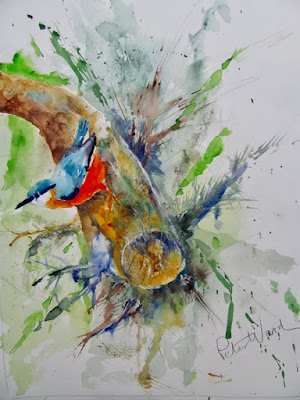This month most of these are from high profile watercolour artists. I'm very envious of their talent and what they can produce. Some are amongst my favourite artists, although there are many more spread across the World who come on the same category. I hope you like them.
The Great Gerard Hendriks - just gets better and better!
Yuko Nagayama - this Japanese artists needs no introduction. This is rather different to her usual subjects - mainly flowers.
Bev Jozwiak - She has many subjects this is terrific love it.
From Stephie Butler an experimental painting using the new liquid charcoal and the similarly new Transparent Orange from Winsor & Newton . I think it great.
Vickie Nelson -another excellent American
Morten E Solberg Snr. A terrific exponent of wild life paintings
Catherine Rey - She loves clocks!
Alvaro Castagnet -The Workshop King does he ever rest! That red appears in many of his paintings.
Janine Gallizia - The Australian Artist long time in Europe but now going back home.
Charles Reid - My Guru
Myint Naing from Myanmar - Another of these fabulous Asian artists
Rae Andrews Gillian - I don't know this artists but like her style.
Another from Bev Jozwiak
Chris Forsey
































































